STANLEY, Mar. 13, 2024 — Damages to gas extraction and leachate control systems caused by a landslide four months ago at the Ontario County Landfill won’t be fixed before the middle of May, Casella Waste Systems Inc. recently told state officials.
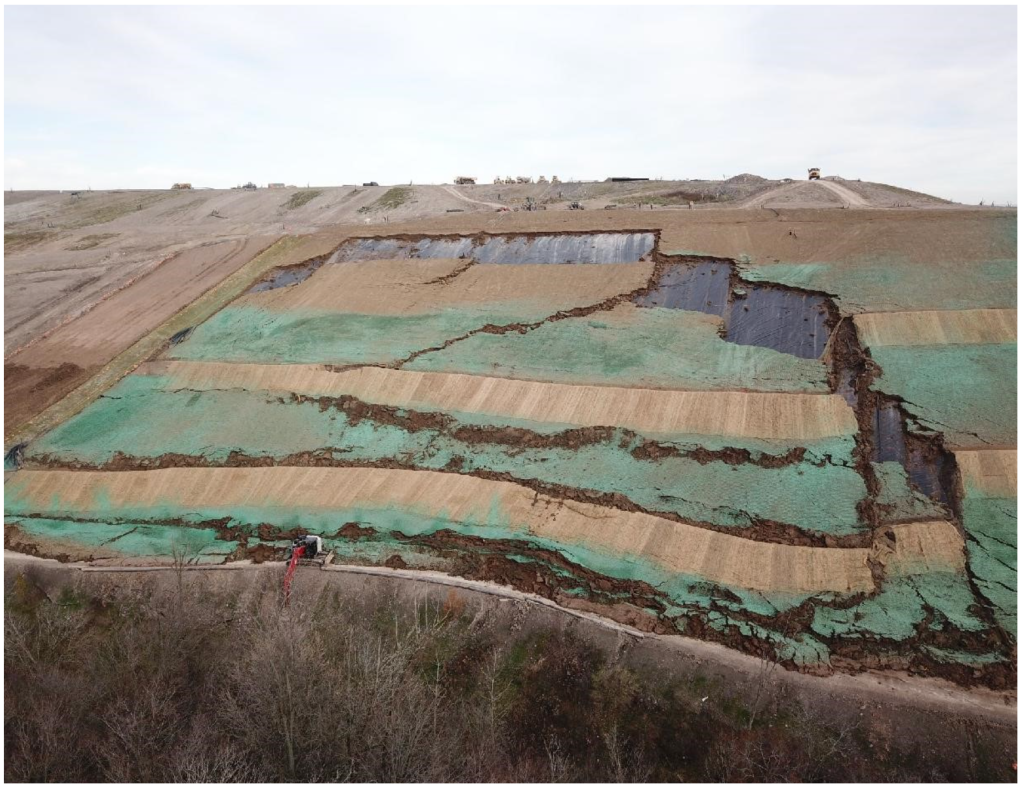
The incident destroyed a lateral line connecting several gas extraction wells and a force main pipe that collects liquids from leachate extraction wells. Barring extreme weather emergencies, both conduits will be replaced within two months, Casella said.
The 389-acre facility located about five miles west of Geneva is the state’s third largest municipal waste landfill.
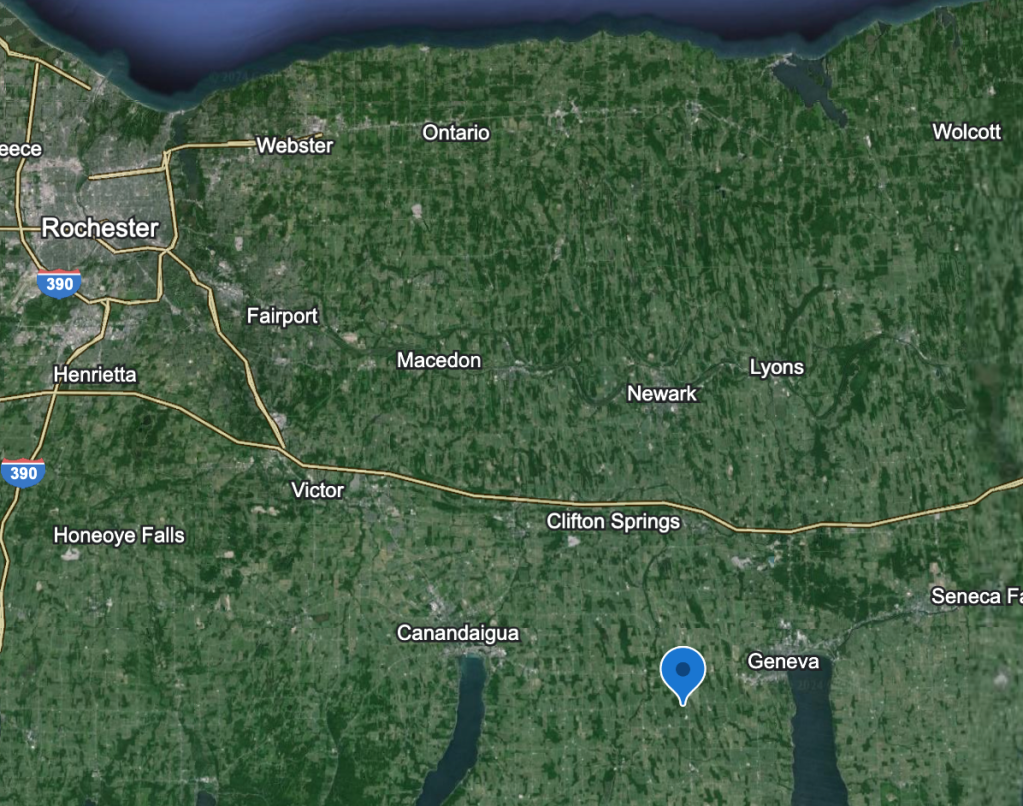
On the afternoon of Nov. 15, a two-foot-thick layer of soil slid down a 3.5-acre section of the landfill’s southwestern face, exposing and tearing a liner that covers buried waste.
“Comprehensive plans are being developed to address … the repair of the torn liner and the installation of a new vacuum lateral (for gas collection), a new force main (for leachate), and enhanced stormwater management infrastructure,” Casella wrote in a Feb. 9 letter to the state Department of Environmental Conservation that WaterFront obtained under the state’s Freedom of Information Law.
The landslide, also known as a cap failure or veneer failure, damaged several gas extraction wells and made it impossible to safely monitor methane emissions, as required under the landfill’s state permit and a 2022 consent agreement with the DEC.
Methane levels within the soil slide area had been exceeding regulations shortly before the Nov. 15 incident. And when normal methane monitoring was restored Dec. 13, levels continued to exceed the allowed limit of 500 parts per million above background levels.
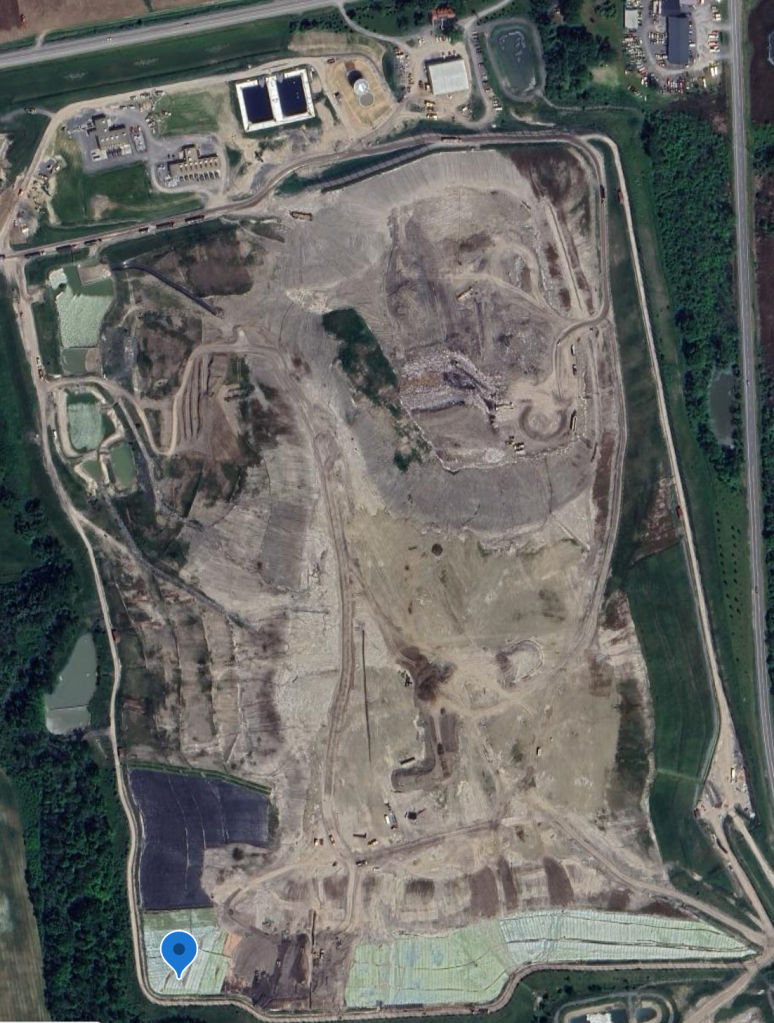
To address the excess methane releases, the company began installing seven new gas extraction wells immediately upslope from the landslide area, according to a DEC daily inspection report for Nov. 28.
In addition to its methane monitoring, the company is also required to track levels of hydrogen sulfide gas emissions from the landfill. The 2022 consent order cited dozens of violations of the DEC’s ambient air limit of 10 parts per billion for H2S, and those violations persisted after the landslide.
The one-hour average H2S concentration at the landfill exceeded the DEC limit several times in November, according to Barton & Loguidice, a Casella consultant.
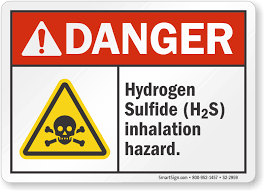
“Observed H2S monitoring exceedances that occurred after Nov. 15 are likely associated with the veneer failure, as several gas wells, lateral pipes, and leachate force mains were impacted by the event,” B&L’s William F. Doebler IV wrote the DEC on Dec. 14.
The landfill is owned by Ontario County and operated by Casella Waste Services of Ontario LLC, a subsidiary of Vermont-based Casella Waste Systems.
Neither the company nor the county has offered a conclusion about the cause of the landslide.
Casella told WaterFront it had complied with state regulations concerning the grade of the slope that failed. Generally, the state requires that external slopes of landfills do not exceed 33 percent.

In response to emailed questions about the landslide, Casella said in a Mar. 7 statement to WaterFront:
“There was no increase in emissions as the impacted wells were capped and replaced in a timely manner. There were no impacts to the leachate collection or liner systems. Gas systems have been fully repaired, with seven new vertical wells above the slope, and the cap membrane repairs are nearing completion. The repaired cap membrane will remain until it is eventually replaced by a new final cap system approved by NYSDEC.”
However, the company had said in its Feb. 9 letter to the DEC that a force main designed to collect leachate had to be removed after the Nov. 15 incident and was scheduled to be replaced in May. The letter also said repairs were scheduled for the “torn liner.”
Ontario County Administrator Chris DeBolt updated the county’s initial reaction to the landslide in a Mar. 7 email to WaterFront. He explained that since the gas collection system’s vacuum line was damaged, gas from the disturbed area has been passively vented.

DeBolt also said that “no action related to the leachate control system was necessary because it was not impacted.”
That appeared to overlook Casella’s plans to replace the force main, which were cited in the company’s Feb. 9 letter. Four DEC officials and four Casella employees were listed as receiving courtesy copies of the letter — but no Ontario County officials were CCed.
The DEC said in a Mar. 7 statement to WaterFront that it is working with Casella and the county “to prevent any future occurrence and ensure the protection of public health and the environment. Analysis of the incident is ongoing and enforcement actions have not been taken, to date.”
The havoc the landslide created was a significant setback to corrective actions that were required under the October 2022 consent order between the DEC, the county and the company.
In early November 2022, the DEC imposed a $500,000 fine on Casella and Ontario County for an assortment of environmental violations at the landfill between the years 2015 and 2022.
The violations included 225 documented cases of excessive hydrogen sulfide in ambient air, failure to properly grade slopes, failure to install gas collection infrastructure and multiple releases of toxic leachate and contaminated stormwater.
Under its contract with the county, Casella was responsible for paying the fine.
Slope stability is a concern at all the state’s large landfills, including Seneca Meadows Inc., the state’s largest. Located between Waterloo and Seneca Falls about 15 miles east of the Ontario landfill, SMI must address the issue in its pending application for a state permit to expand.
In its proposed Valley Infill project, SMI would store wastes in the area above the former Tantalo landfill and above approximately 144 acres of existing landfill. It seeks permission to increase the landfill’s maximum height by about 70 feet, which would make it taller than the Statue of Liberty, The New York Times reported.
“The cell caps will be designed with slopes no more than 33 percent and no less than 4 percent,” the SMI application says.
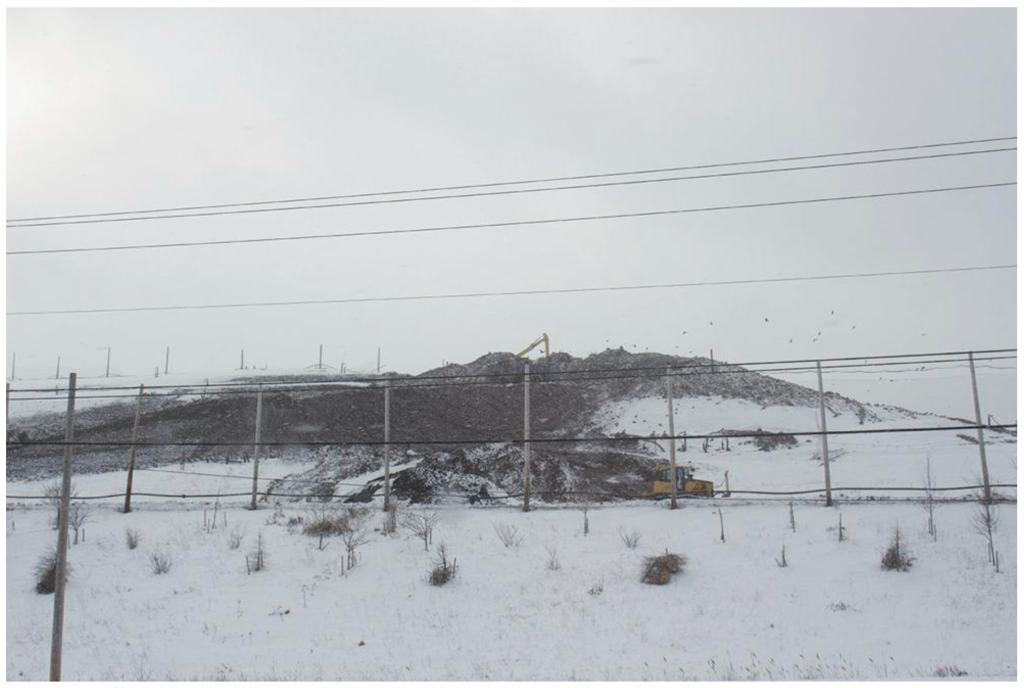
The company says its required environmental impact statement will include an evaluation of “interface shear strengths” and how the landfill’s design assures “slope stability.”
In February 2021, local officials and neighbors of the landfill reported an apparent “blowout” or slope failure on the northeast corner of Seneca Meadows.
But Kyle Black, the manager at SMI, recently reiterated what he said at the time. “It was normal waste filling operations,” he said last week. “There was some movement of the sub grade and the soil had to be treated.”


In an interview, Black said SMI had never experienced a “slope failure.”
Steve Churchill, a former member of the Seneca Falls Town Board, remains skeptical. “The work at the site was frantic,” Churchill said of the unannounced activity in 2021. “The repair/patch was completed in short order. Today that area has a huge green liner covering it. I refer to it as the great green band-aid.”
But SMI had been experimenting for years with ways to treat soil on its embankments. A peer reviewed 2017 study analyzed SMI’s use of soil mixing “to improve the bearing capacity and shear strength of very soft clay deposit to increase the stability of perimeter embankments.”
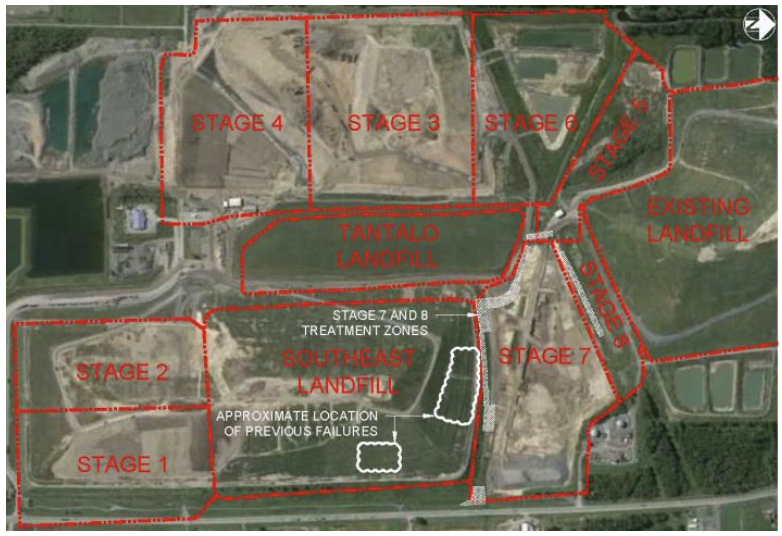
In 2004, SMI did experience “two slope failures,” according to the study by Daniel Ruffing of Geo-Solutions Inc. and others. It cited an engineer’s conclusion that they were caused by “soft clayey deposits that did not have sufficient shear strength to resist the weight of the berm.”
In response, the landfill began “a series of recent projects” experimenting with mixtures of cement and soil to improve its bearing capacity. “Up to this point, soil mixing at this facility has been successful,” the authors concluded.

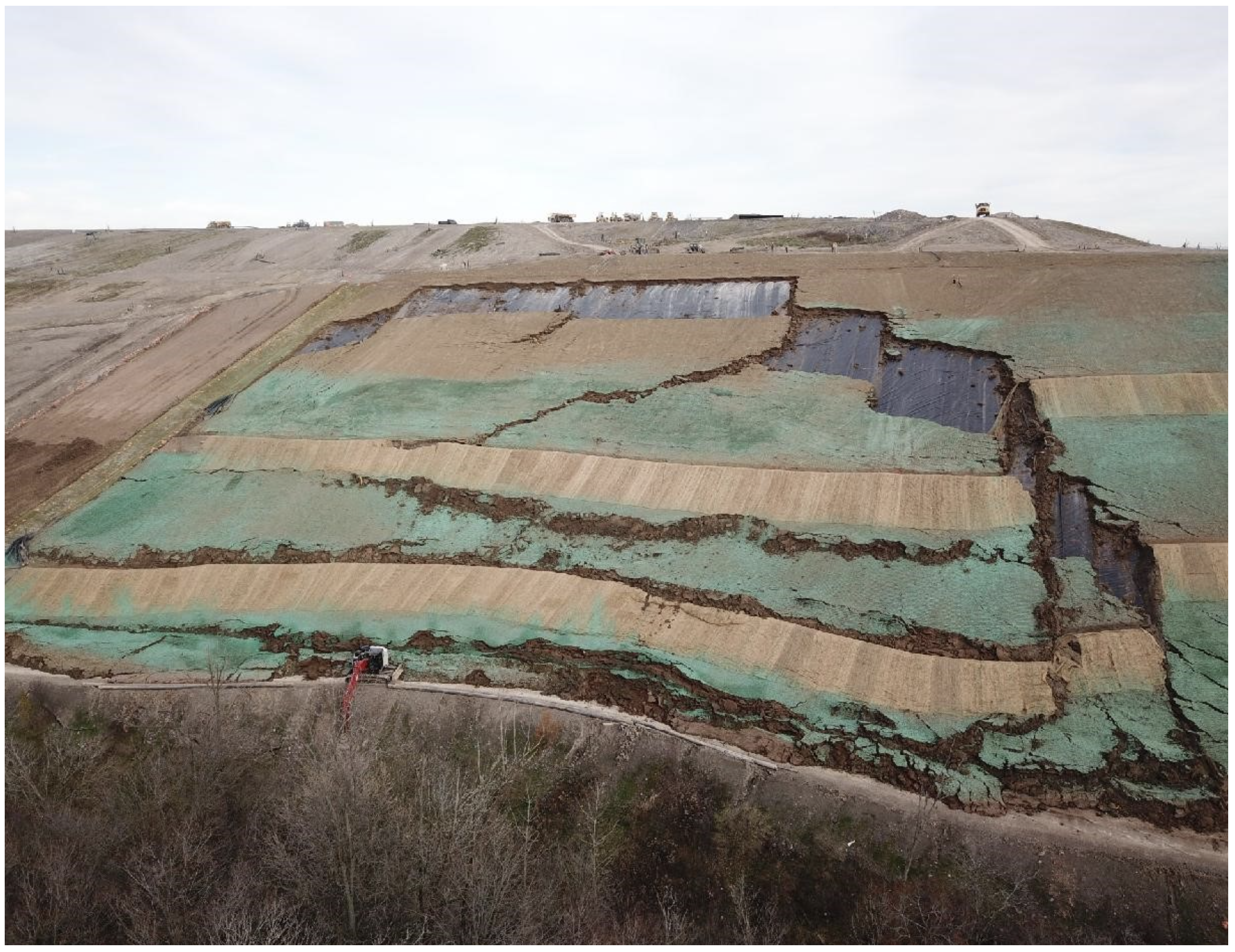
Great reporting ! You’ve got several stories within this story that can be expanded such as an analysis of all the continuing hydrogen sulfide leaks .
LikeLike